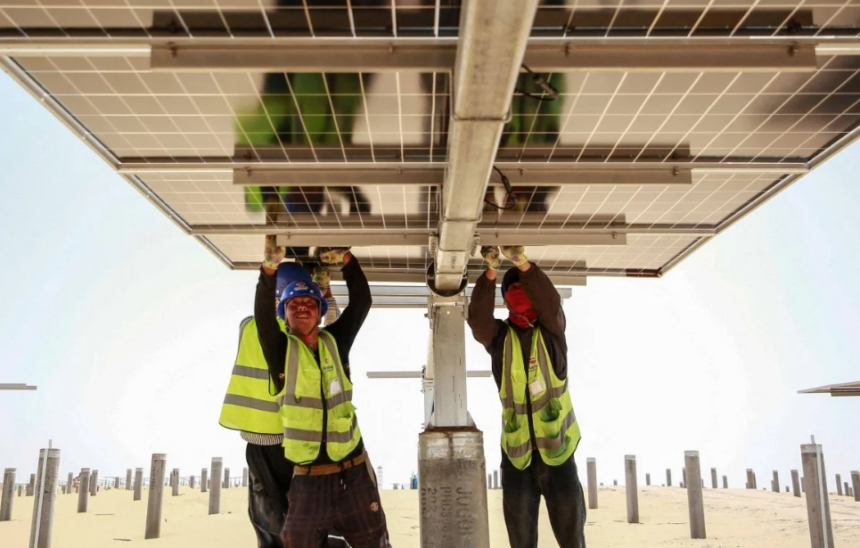China’s wind and solar energy sectors are poised to surpass 40% of the country’s total installed power generation capacity by the end of 2024, according to a report by the China Electricity Council (CEC). This milestone comes after wind and solar energy exceeded coal-fired capacity for the first time in the first half of the year.
The report indicates that China is on track to add approximately 300 gigawatts (GW) of wind and solar power capacity in 2024, slightly surpassing the 293GW added in 2023. This expansion is expected to bring the total wind and solar power generation capacity to 1,350GW, accounting for over 40% of the projected 3,300GW total installed capacity from all energy sources.
Additionally, the growth in renewable energy is expected to increase the overall installed capacity of non-fossil fuel energy sources, including nuclear and hydropower, to 1,900GW by the end of the year. This would constitute 57.5% of China’s energy mix, up from 53.9% in 2023.
China, the world’s largest greenhouse gas emitter and power consumer, has set an ambitious goal to have 80% of its total energy mix come from non-fossil fuel sources by 2060, aligning with its target to achieve carbon neutrality.
As of mid-2024, China had 1,180GW of combined wind and solar capacity, representing 38.4% of the country’s total 3,070GW power capacity. In comparison, coal-fired capacity stood at 1,170GW, or 38.1% of the total.
The CEC forecasts that coal’s share in China’s energy mix will drop below 37% by the end of the year. This decline aligns with President Xi Jinping’s 2021 commitment to “strictly control coal consumption” up to 2025 and “phase down coal consumption” from 2026.
Despite the rapid growth in renewable energy capacity, the CEC warned of ongoing challenges related to the low utilization of clean power. The report noted that some regions might struggle to absorb the increased renewable energy, potentially leading to a significant drop in utilization rates.
China’s grid infrastructure, which is crucial for the flexible transmission and storage of intermittent wind and solar power, still requires significant upgrades. The utilization rates for solar and wind power capacity in terms of operating hours were less than half of those for coal in the first half of the year, indicating that the actual power generation volume from solar and wind remains much lower than from coal.
In 2023, coal accounted for nearly two-thirds of China’s electricity supply, highlighting the ongoing dominance of coal in the country’s energy landscape.

